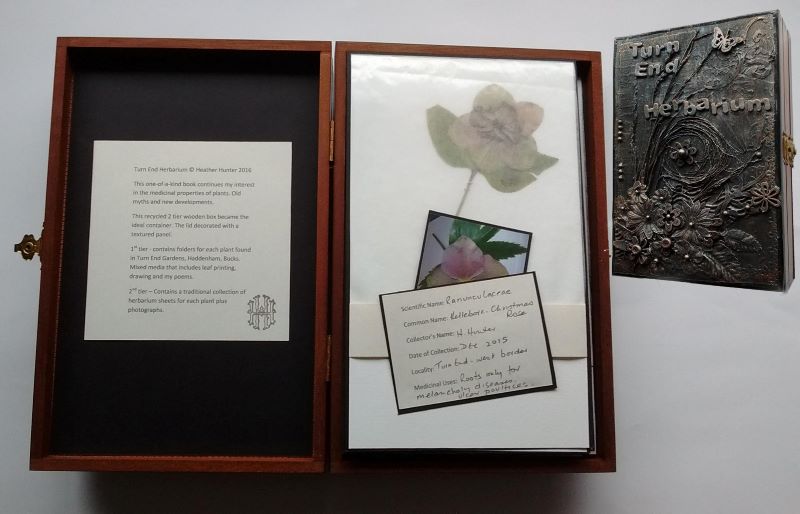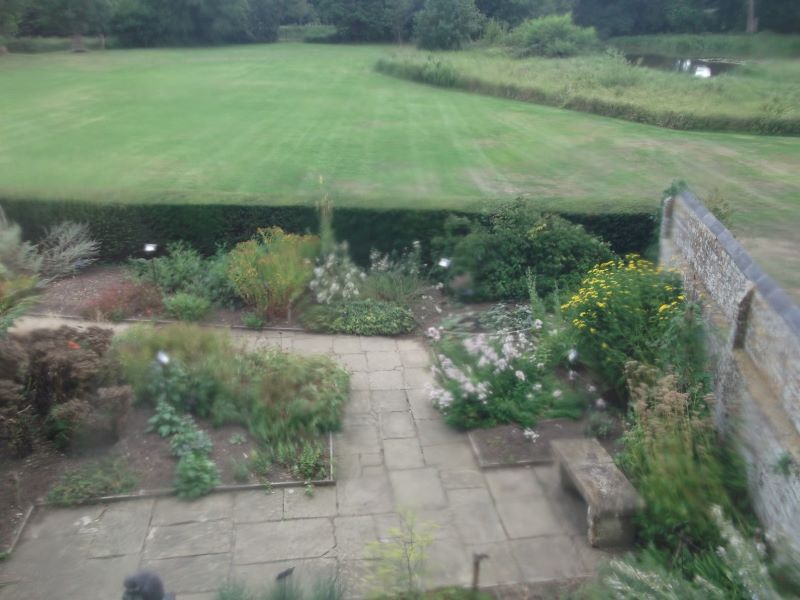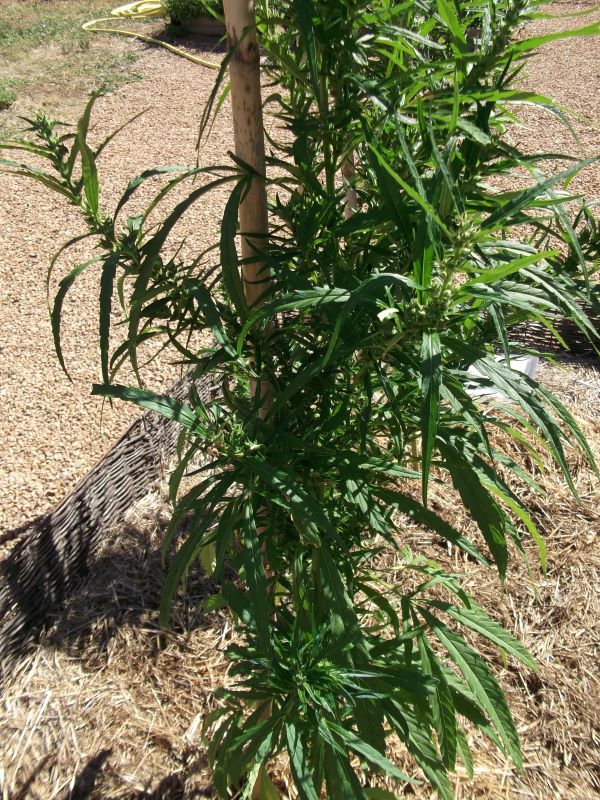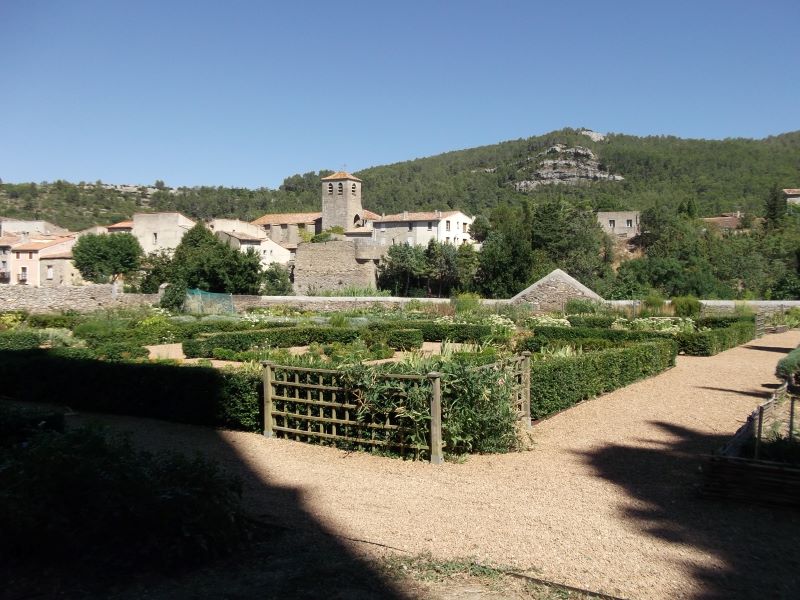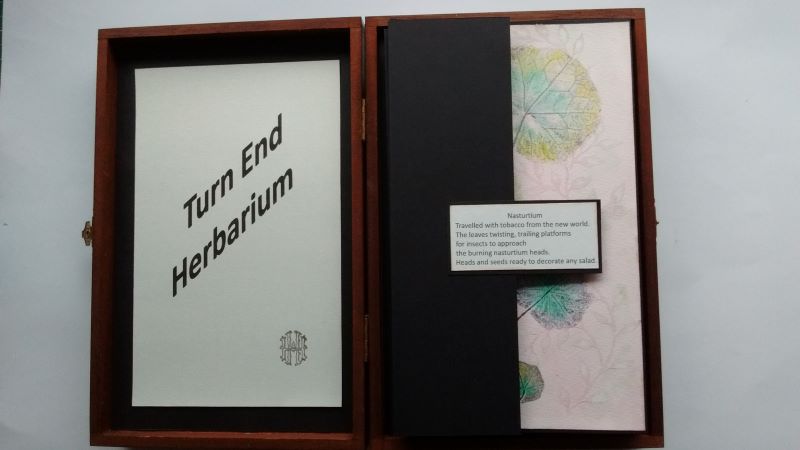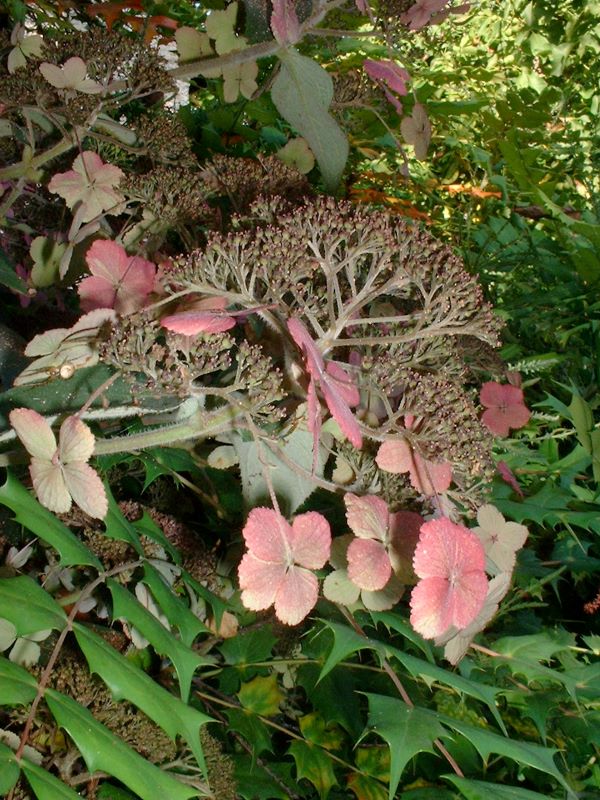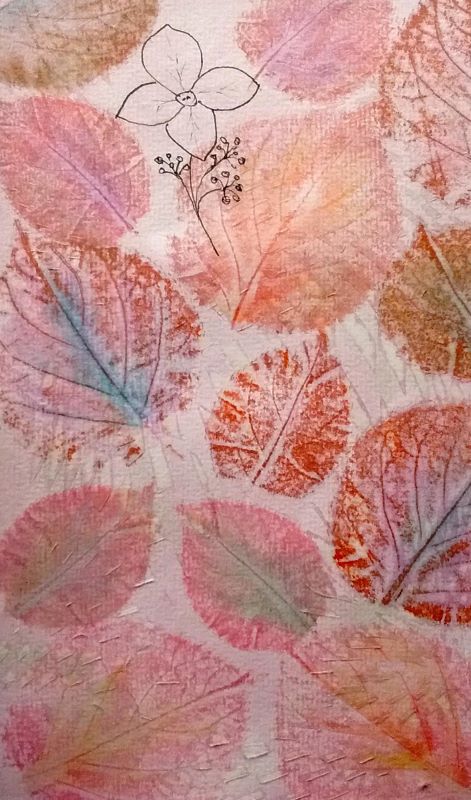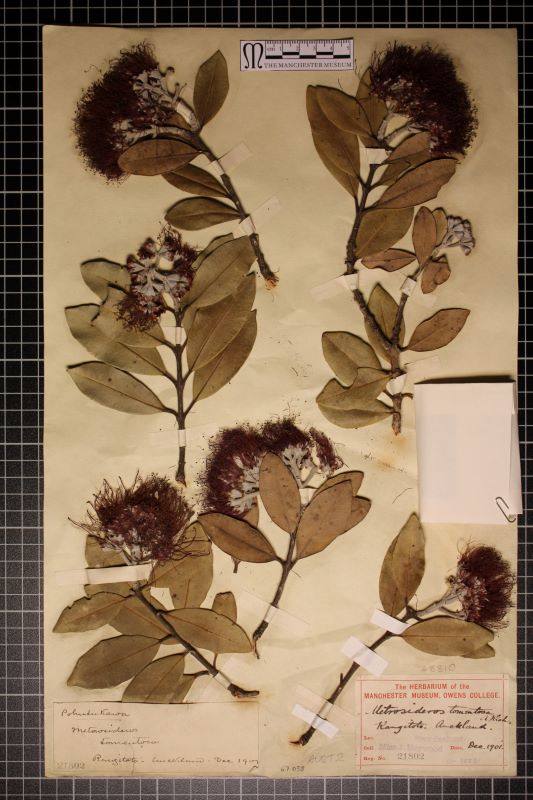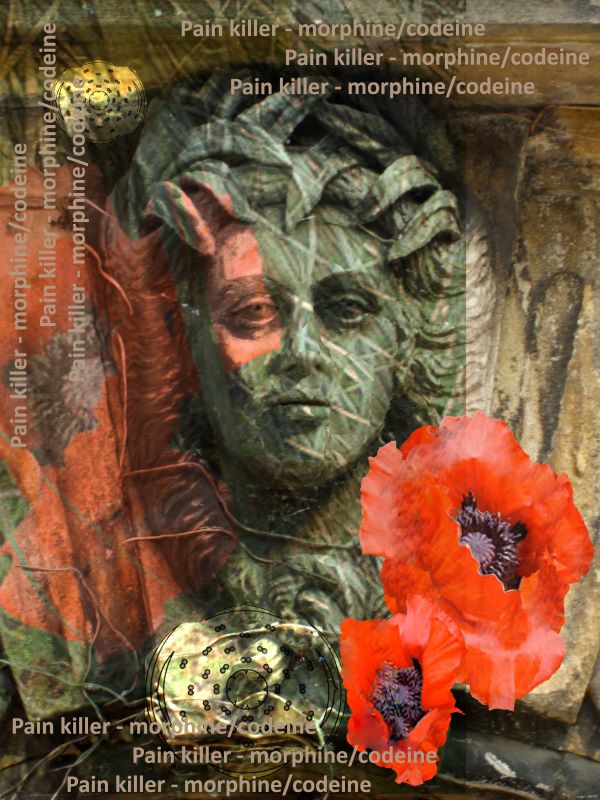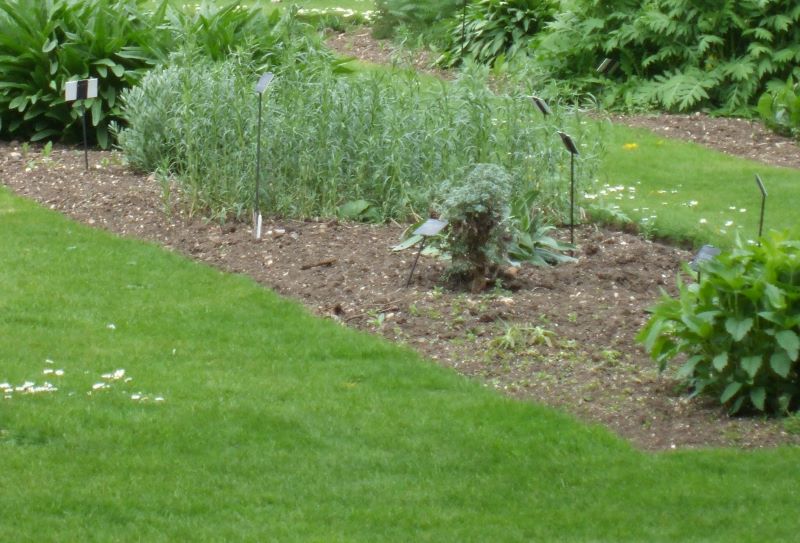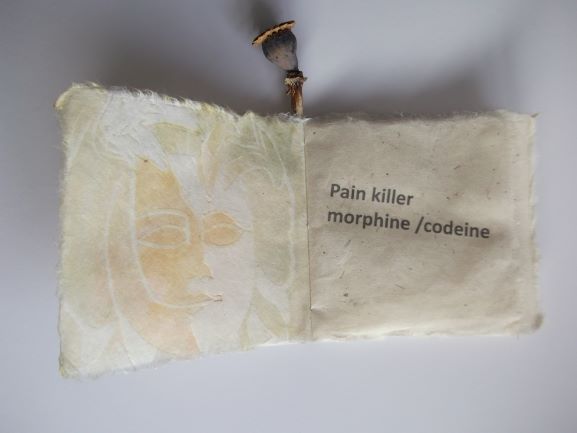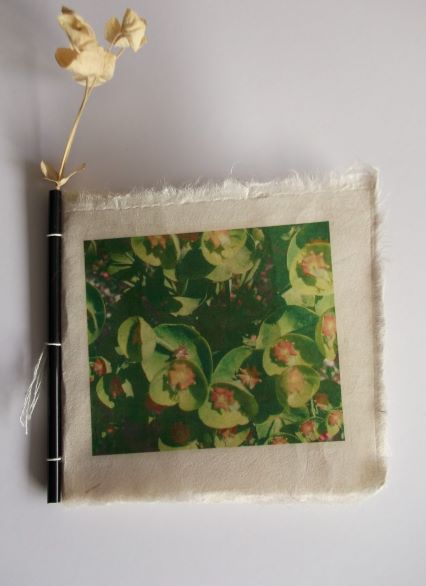My story begins a long way from bookmaking. I was asked if I could help rescue a piece of bobbin lace. A local museum had been donated an 80-year-old bobbin lace pillow with lace and pattern attached. Something had happened to it over recent years and the threads had become tangled. Bobbin lace is made by twisting threads around pins placed on a pattern on the pillow. Each thread is attached to a bobbin. Each area or type of lace has different bobbins. Some carved out of bone, some bone with beads called spangles attached to add a little weight and some as in this case smooth wooden bulbs. On inspection I found that I could work the pattern in reverse, untwisting the tangle as I went. I had not used this type of bobbin before and as I worked, the bobbins clack- clacked to an interesting rhythm and my mind wandered back to nineteenth century lacemakers using these bobbins all day and into the evening using a candle and a sphere of water to enhance the light. Many suffered from failing sight, even Rainer Maria Rilke wrote a poem about their plight.
…Is it inhuman that two eyes were honed
down to this lace, this small, tight bit of lace —
two eyes you might wish once more to possess?
Lacemaker long since gone (and finally blind):
did you infuse this thing with your devotion; …
Rilke, R., & Schoolfield, G. (2015). The Lace. In L. Krisak (Trans.), New Poems (pp. 79-80). Boydell & Brewer.
Is this what happened to the lacemaker of this piece? Was it lack of dexterity at the onset of old age or lack of sight through lacemaking that caused the tangles? We will never know but her work in all its glory can be seen in the local museum know.
I decided to write a prose poem about the lace language:
“Lace language is alive when threads are woven by the strange power of the hands, dancing bobbins thrown out, the clack, clack of bobbins on the return, threads woven with ease, creating patterns, old and new. Through a continuous conversation a pattern is achieved, threads warping, twisting, crossing and finally pinned when pairs of threads agree. The lacemaker’s fingers work rapidly with the smooth warm wooden bulbs, spinning a yarn, the rhythm of her sentences repeating. Her eyes follow the conversation, and correct the language instantly where needed, until the dancing is finished, the eyes are tired from the strain of the candle lit globe and the pillow welcomes her head, only the interlaced threads show the passing of time so the delicate fine web, open to the air can be preserved for the next generation. The lace language’s beauty is wrapped in blue tissue to come alive when used repeatedly around the throats and hands of kings. Preserving the tradition and continuing the conversation.”
So began a series of books and prints about lace. All can be seen on my web site https://www.hunterbooks.co.uk/lace-tells.htm but the letterpress printed book you can see at the Buckinghamshire craft guild shop.

